![Rowe, Keith : The Room Extended [4 CDs] (erstwhile) Rowe, Keith : The Room Extended [4 CDs] (erstwhile)](https://www.teuthida.com/productImages/misc4/23279.jpg)
A massive and rewarding work of organized sound extending ea-improviser, AMM guitarist Keith Rowe's work "The Room" into a massive 4 CD set of compositions, layering work familiar from his recent improvisations with classical compositions, field recordings, &c. &c.
Out of Stock
Quantity in Basket: None
Log In to use our Wish List
Shipping Weight: 8.00 units
Sample The Album:
Keith Rowe-guitar, electronics
Click an artist name above to see in-stock items for that artist.
Label: erstwhile
Catalog ID: ErstSolo 004-4
Squidco Product Code: 23279
Format: 4 CDs
Condition: New
Released: 2016
Country: USA
Packaging: Digipack - 4 panel
Recorded at home from mid-2013 to mid-2016 by the artist.
"I first noticed the tremor in Keith's right hand on a visit to his home in Vallet in the summer of 2014. Presumably it had existed for some time although while I was in Paris (from February 2013) we saw Keith several times a year and I hadn't picked up anything before. When I returned to Vallet in November for two concerts in honor of Christian Wolff's 80th birthday, Wolff at one point asked him directly about the shaking and Keith replied that they were having examinations but it might well be Parkinson's which, in fact, it turned out to be. The Room Extended was begun in 2013 and completed in 2016. Death had always been on his mind, often talked about very matter-of-factly, but, as clearly indicated by the cover image of his brain (a pre-Parkinson's diagnosis scan for a possible tumor), one assumes a permeation of this concern over most of the course of the construction of the present work.
As in 2007's The Room (ErstSolo 001), this was put together at home, composed if you will, though the multitude of components themselves are largely improvised. One of the first things that hits you is the immense depth of much of the work; there always seems to be at least four or five layers of sound occurring, enough that on each subsequent listen (I've been through its four-plus hours five times so far), you pick up not only sounds you've not heard/noticed before but, more rewardingly, new relationships between them, both simultaneous ones and ones spanning the course of the piece. For a while, Rowe has been interested in revisiting sound areas he's investigated over the years, seeing if there might be aspects he'd previously missed or investigating new ways of deploying them and at several moments here, listeners familiar with his history may well recognize some signature sounds. There are plenty of new, even startling ones as well, such as the artificial sounding bird call that's looped for an almost unconscionable length at one point. More tellingly, the habit he first (as far as I know) used in his solo performance in Tokyo in 2008, that of the intentional inclusion of extracts from Western classical music, is a thread that winds through the entirety of The Room Extended. In at least one sense, it's simply an honest evocation of his room, the main room of his home in Vallet, in which any visitor will hear over his stereo, not the latest release from the contemporary improvising world, but rather Wagner, Haydn, Brahms, Purcell, Mondonville and others. This is, in a circumscribed sense, his room. So certain themes that have preoccupied him in recent years--Wagner's 'Tristan und Isolde' or the death scene from Purcell's 'Dido and Aeneas', for instance--make their presence known quite strongly. It's an odd mix, I think, for those of us who know his work, on his own, with AMM or in collaboration with countless others. There's a difference between a random radio grab and an explicit implanting of material, one that I've struggled with but am coming around to. For Rowe, in addition to simply having a great appreciation for their beauty and probity, it's an overt acknowledgement of the tradition from which he arises.
Of course, Rowe's notion of The Room encompasses much more than the Western classical tradition and here one gradually encounters more from the East, including what seems to be Indian and Egyptian musics via the radio (the latter sounding like Mohamed Abdel Wahab, though that's a guess). But more than id'ing this or that source, the power in The Room Extended derives from the way these and the far more prevalent electronic and guitar sounds (there are surprisingly many very recognizable instances of the latter) are filtered, layered and paced over its 246 minutes, the fact that, to these ears, intense interest is consistently maintained. Apart from The Room, Rowe's historic involvement with anything remotely compositional has been very limited, essentially confined to graphic scores (Cardew, Wolff, Brown, his own work like 'Pollock'), so you wonder how things might have evolved differently had he been working more often in this milieu, where things are carefully considered over a long period of time. Once when we visited, he played us a portion of music that he was considering using for The Room Extended, a thick sandwich of string sections from six or seven sources, layered atop one another. Sounded amazing and I think you hear a snatch of it (or something like it) at a couple of points, including toward the end of the present work. But more, the overall feeling I get from the piece is one man, sitting at his work space in his small loft in the converted cellier in Vallet, letting all the sounds, remembered and ongoing, filter in, mixing with his knowledge of what's occurring in the world (one is tempted to read an uncritical demographic observation in the increasing presence of Islamic music as the piece develops) and, always, with the acknowledgement of the certainty of death. His upcoming recording with Michael Pisaro deals with the Venerable Bede's analogy of life: a sparrow flying into a mead hall where a raucous feast is taking place and quickly flying out a window on the opposite side. Here, amidst a whirlpool of sound, from radios, news commentaries, orchestras, guitars and electronics, at the very last, an alarmed voice speaking in Spanish is abruptly cut off. Then nothing."-Brian Olewnick, Just Outside
Get additional information at Brian Olewnick's Just Outside
Artist Biographies
• Show Bio for Keith Rowe "tabletop guitarist and painter. Rowe is a founding member of both the influential AMM in the mid-1960s (though in 2004 he quit that group for the second time) and M.I.M.E.O. Having trained as a visual artist, Rowe's paintings have been featured on most of his own albums. After years of obscurity, Rowe has achieved a level of relative notoriety, and since the late 1990s has kept up a busy recording and touring schedule. He is seen as a godfather of EAI (electroacoustic improvisation), with many of his recent recordings having been released by Erstwhile Records. Rowe began his career playing jazz in the early 1960s-notably with Mike Westbrook and Lou Gare. His early influences were guitarists like Wes Montgomery, Charlie Christian and Barney Kessel. Eventually, however, Rowe grew tired of what he considered the form's limitations. Rowe began experimenting, slowly and gradually. An important step was a New Year's resolution to stop tuning his guitar-much to Westbrook's displeasure. Rowe gradually expanded into free jazz and free improvisation, eventually abandoning conventional guitar technique. This change in his approach to guitar, Rowe reports, was partly inspired by a teacher in one of his painting courses who told him, "Rowe, you cannot paint a Caravaggio. Only Caravaggio can paint Caravaggio." Rowe reports that after considering this idea from a musical perspective, "trying to play guitar like Jim Hall seemed quite wrong." For several years Rowe contemplated how to reinvent his approach to the guitar, again finding inspiration in visual art, namely, American painter Jackson Pollock, who abandoned traditional painting methods to forge his own style. "How could I abandon the technique? Lay the guitar flat!" Rowe developed various prepared guitar techniques: placing the guitar flat on a table and manipulating the strings, body and pick-ups in unorthodox ways to produce sounds described as dark, brooding, compelling, expansive and alien. He has been known to employ objects such as a library card, rubber eraser, springs, hand-held electric fans, alligator clips, and common office supplies in playing the guitar. A January 1997 feature in Guitar Player magazine described a Rowe performance as "resemble a surgeon operating on a patient." Rowe sometimes incorporates live radio broadcasts into his performances, including shortwave radio and number stations (the guitar's pick-ups will also pick up radio signals, and broadcast them through the amplifier). AMM percussionist Eddie Prévost reports that Rowe has "an uncanny touch on the wireless switch", able to find radio broadcasts which seem to blend ideally with, or offer startling commentary on, the music. (Prévost, 18). On AMMMusic, towards the end of the cacophonous "Ailantus Glandolusa", a speaker announces via radio that "We cannot preserve the normal music." Prevost writes that during an AMM performance in Istanbul, Rowe located and integrated a radio broadcast of "the pious intonation of a male Turkish voice. AMM of course, had absolutely no idea what the material was. Later, it was complimented upon the judicious way that verses from The Koran had been introduced into the performance, and the respectful way they had been treated!" In reviewing World Turned Upside Down, critic Dan Hill writes, "Rowe has tuned his shortwave radio to some dramatically exotic gameshow and human voices spatter the mix, though at such low volume, they're unintelligible and abstracted. Rowe never overplays this device, a clear temptation with such a seductive technology - the awesome possibility of sonically reaching out across a world of voices requires experienced hands to avoid simple but ultimately short-term pleasure. This he does masterfully, mixing in random operatics and chance encounters with talkshow hosts to anchor the sound in humanity, amidst the abstraction." " Some accounts report that Rowe's guitar technique was an influence on Pink Floyd founder Syd Barrett: "Taking his cues from experimental guitarist Keith Rowe of AMM, Barrett strived to push his music farther and farther out into the zone of complete abstraction." Rowe has worked together with numerous composers and musicians, including Cornelius Cardew, Christian Wolff, Howard Skempton, Jeffrey Morgan, John Tilbury, Evan Parker, Taku Sugimoto, Otomo Yoshihide, Sachiko M, Oren Ambarchi, Christian Fennesz, Burkhard Beins, Kurt Liedwart, Toshimaru Nakamura, David Sylvian and Peter Rehberg. ^ Hide Bio for Keith Rowe
10/30/2024
Have a better biography or biography source? Please Contact Us so that we can update this biography.
Track Listing:
CD1
1. Untitled 1:00:02
CD2
1. Untitled 1:00:01
CD3
1. Untitled 56:29
CD4
1. Untitled 1:09:34
Improvised Music
Electro-Acoustic
Electro-Acoustic Improv
Keith Rowe
Guitarists, &c.
Organized Sound and Sample Based Music
Solo Artist Recordings
Staff Picks & Recommended Items
Search for other titles on the label:
erstwhile.


![Rowe, Keith : The Room Extended [4 CDs] (erstwhile) Rowe, Keith : The Room Extended [4 CDs] (erstwhile)](https://www.teuthida.com/productImages/full/23279.Full.jpg)



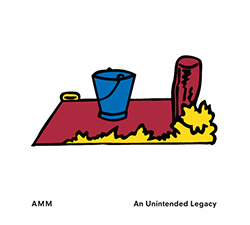
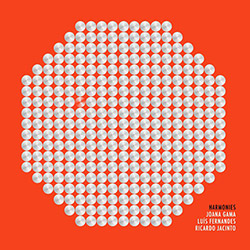

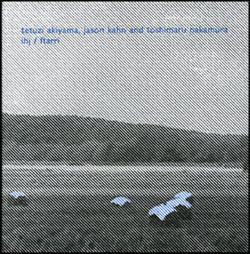
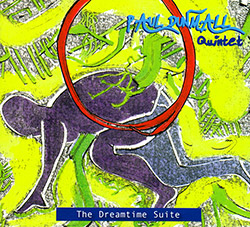





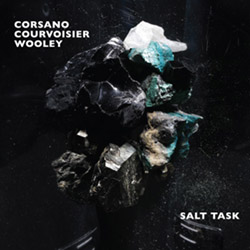



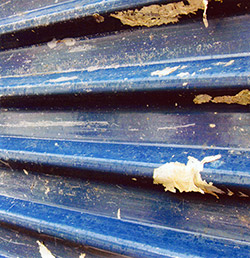
















![Musicworks Magazine: #149 Fall 2024 [MAGAZINE + CD]](https://www.teuthida.com/productImages/misc4/35470.jpg)

![Nevai, Nandor: <<The PRICE of FRONTIER>> Book 1: FULK [BOOK + 4 CDs]](https://www.teuthida.com/productImages/misc4/35464.jpg)
![Nevai, Nandor: <<The PRICE of FRONTIER>> Book 2: MARTIAL [BOOK + 4 CDs]](https://www.teuthida.com/productImages/misc4/35465.jpg)
![Nevai, Nandor: <<The PRICE of FRONTIER>> Book 3: JASSOM [BOOK + 4 CDs]](https://www.teuthida.com/productImages/misc4/35466.jpg)
![Nevai, Nandor: <<The PRICE of FRONTIER>> Book 4: HARD-WON [BOOK + 4 CDs]](https://www.teuthida.com/productImages/misc4/35467.jpg)



![Elephant9 with Terje Rypdal: Catching Fire [VINYL 2 LPs]](https://www.teuthida.com/productImages/misc4/35355.jpg)
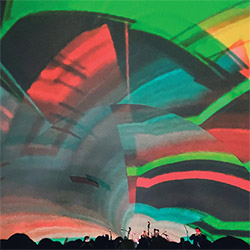
![Mazurek, Rob & Exploding Star Orchestra: Live at Adler Planetarium [VINYL]](https://www.teuthida.com/productImages/misc4/35233.jpg)
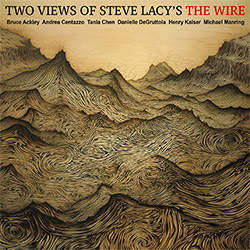
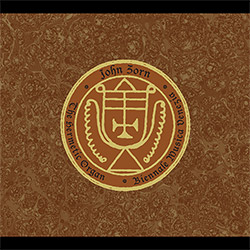
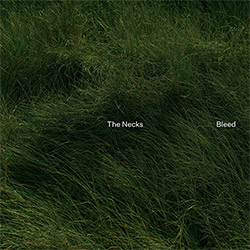
![Necks, The: Bleed [VINYL BLACK]](https://www.teuthida.com/productImages/misc4/35250.jpg)
![Necks, The: Bleed [VINYL GREEN + DOWNLOAD]](https://www.teuthida.com/productImages/misc4/35251.jpg)
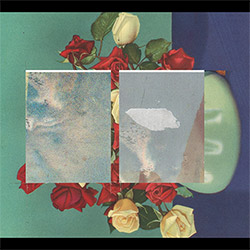



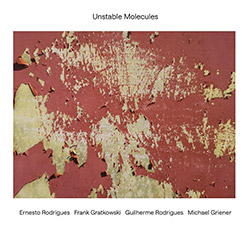
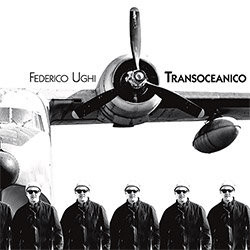
![Attias, Michael (Attias / Leibson / Pavolka / Ferber / Hoffman): Quartet Music Vol. I: LuMiSong [VINYL]](https://www.teuthida.com/productImages/misc4/34878.jpg)
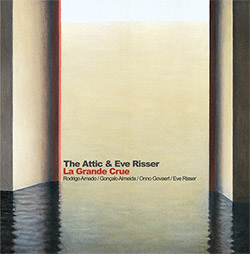
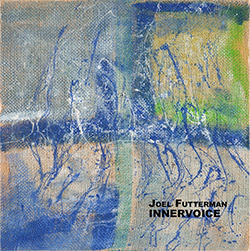

![Cunningham, Alex / Eli Wallace : The Terrible Habit Of Theatre [VINYL]](https://www.teuthida.com/productImages/misc4/35351.jpg)
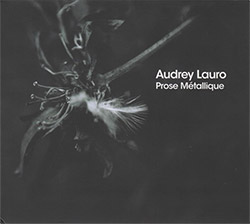
![Hoffman, Christopher (feat. Henry Threadgill / Anna Webber): Vision Is The Identity [VINYL]](https://www.teuthida.com/productImages/misc4/34877.jpg)

![Gregg, J.J. / Pavan Kanekal: Ease & Flow [CD + DOWNLOAD]](https://www.teuthida.com/productImages/misc4/35335.jpg)
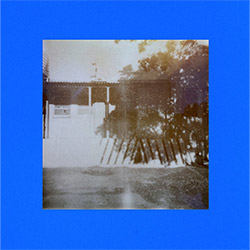
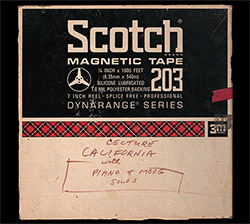
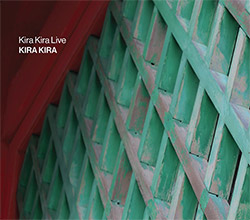
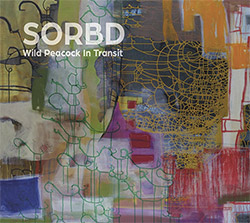
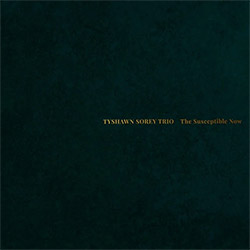



![DNS: Taking Big Bites Of The Khandas Three Cafes Deep [2 CDs]](https://www.teuthida.com/productImages/misc4/35334.jpg)




![Cleaver, Gerald: The Process [VINYL]](https://www.teuthida.com/productImages/misc4/34966.jpg)




![Alva Noto: HYbr:ID II [VINYL 2 LPs]](https://www.teuthida.com/productImages/misc4/35201.jpg)

![Baron, Derek / Luke Martin: Distinct and Concealed [CASSETTE + DOWNLOAD]](https://www.teuthida.com/productImages/misc4/35079.jpg)

![Lyle, Erica Dawn : Colonial Motels [CASSETTE + DOWNLOAD]](https://www.teuthida.com/productImages/misc4/35080.jpg)







![Alva Noto: HYbr:ID III [VINYL 2 LPs]](https://www.teuthida.com/productImages/misc4/35011.jpg)
![Kubisch, Christina / Trondheim Voices: Stromsanger 2022 For Six Voices And Electromagnetic Waves [VINYL]](https://www.teuthida.com/productImages/misc4/34628.jpg)
![Ristic, Manja / Joana Guerra / Veronica Cerrotta: Slani pejzazi [CASSETTE + DOWNLOAD]](https://www.teuthida.com/productImages/misc4/34928.jpg)
![Euro Herc: Segnali [CASSETTE + DOWNLOAD]](https://www.teuthida.com/productImages/misc4/34929.jpg)







![Zurria, Manuel: Fame di Vento [3 CDs]](https://www.teuthida.com/productImages/misc4/35167.jpg)

![Granberg, Magnus / Nattens Inbrott / Skogen: Holde Traume, Kehret Wieder! [2 CDs]](https://www.teuthida.com/productImages/misc4/35038.jpg)
![Frey, Jurg: Outermost Melodie [2 CDs]](https://www.teuthida.com/productImages/misc4/35039.jpg)

![Pavone, Jessica: Reverse Bloom [VINYL]](https://www.teuthida.com/productImages/misc4/34895.jpg)




![Modney (Modney / Wooley / Gentile / Roberts / Pluta / Symthe / ...): Ascending Primes [2 CDs]](https://www.teuthida.com/productImages/misc4/34852.jpg)






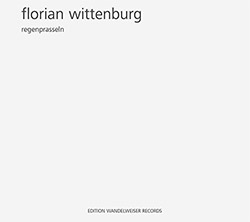

![Kirschner, Kenneth / Joseph Branciforte: From the Machine: Volume 1 [VINYL]](https://www.teuthida.com/productImages/misc4/30767.jpg)
![Golub, Phillip: Filters [VINYL + DOWNLOAD]](https://www.teuthida.com/productImages/misc4/32379.jpg)


![Deerlady (Obomsawin, Mali / Magdalena Abrego): Greatest Hits [VINYL]](https://www.teuthida.com/productImages/misc4/34876.jpg)




![Haino, Keiji: Black Blues [2 CDs]](https://www.teuthida.com/productImages/misc4/35109.jpg)



![Surplus 1980: Illusion of Consistency [CD]](https://www.teuthida.com/productImages/misc4/35069.jpg)
![Staiano, Moe: Away Towards the Light [VINYL + DOWNLOAD]](https://www.teuthida.com/productImages/misc4/35037.jpg)
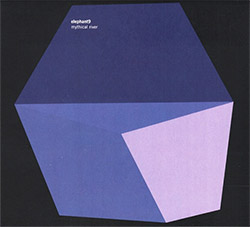



![Caveira (Gomes / Sousa / Abras / Ferrandini): Ficar Vivo [VINYL]](https://www.teuthida.com/productImages/misc4/34643.jpg)
![Gregg, J. J. / David Van Auken: Lunar Prairie [CD w/ DOWNLOAD]](https://www.teuthida.com/productImages/misc4/34611.jpg)

![Coultrain: Mundus [VINYL]](https://www.teuthida.com/productImages/misc4/32439.jpg)
![Mattin: Songbook #6 [VINYL]](https://www.teuthida.com/productImages/misc4/27317.jpg)
![Punkappella: Wake Up [7-inch VINYL]](https://www.teuthida.com/productImages/misc4/17519.jpg)
![Residents, The: WARNING: UNiNC.: Live And Experimental Recordings 1971-1972 [VINYL 2 LPs]](https://www.teuthida.com/productImages/misc4/31521.jpg)
![Coultrain: Phantasmagoria [VINYL]](https://www.teuthida.com/productImages/misc4/30142.jpg)
![Lennon, Sean Ono: Asterisms [VINYL]](https://www.teuthida.com/productImages/misc4/34517.jpg)

![Rotem Geffen: The Night Is The Night [VINYL]](https://www.teuthida.com/productImages/misc4/34631.jpg)

![Coley, Byron: Dating Tips for Touring Bands [VINYL]](https://www.teuthida.com/productImages/misc4/17906.jpg)

![Lost Kisses: My Life is Sad & Funny [DVD]](https://www.teuthida.com/productImages/misc4/lostKissesDVD.jpg)